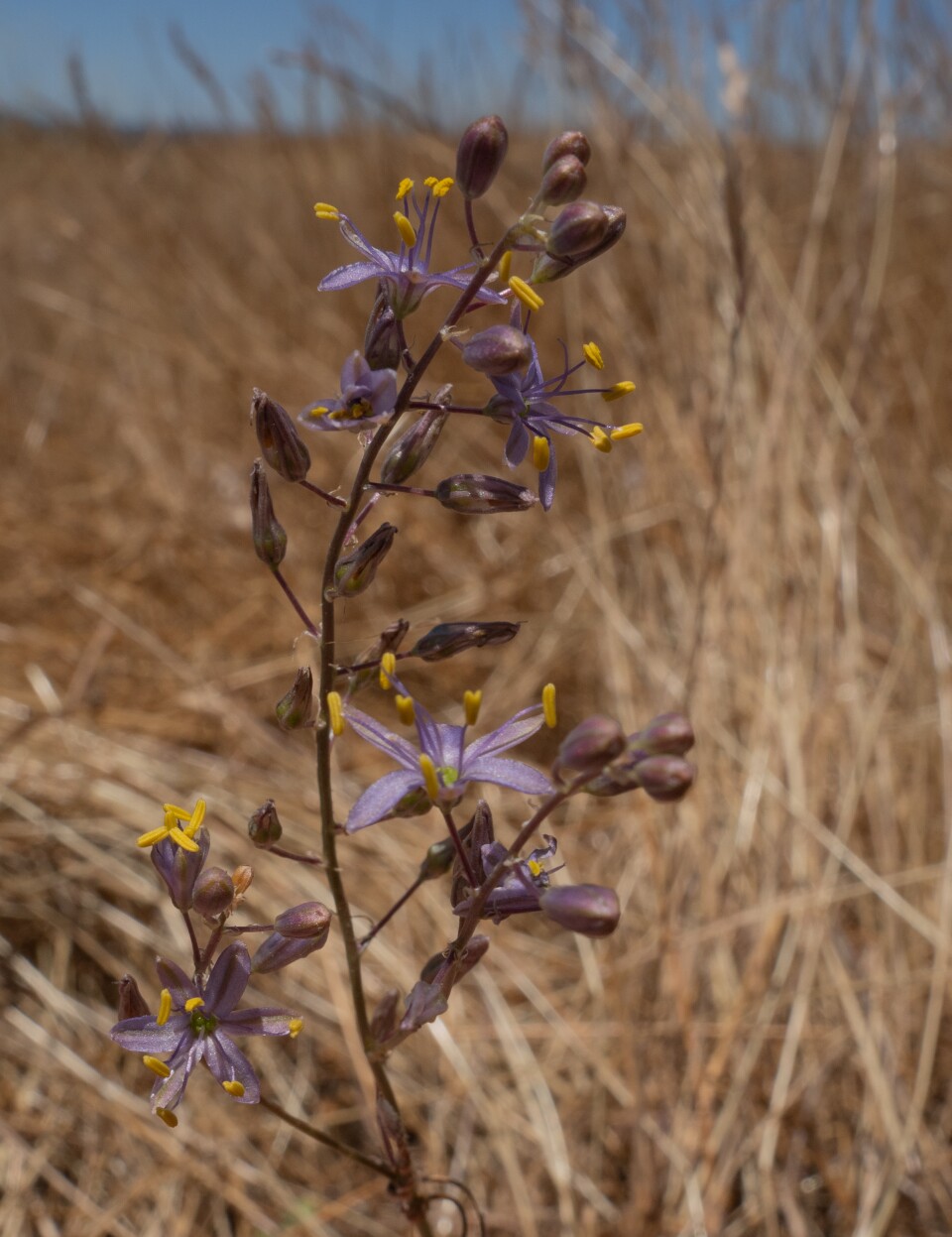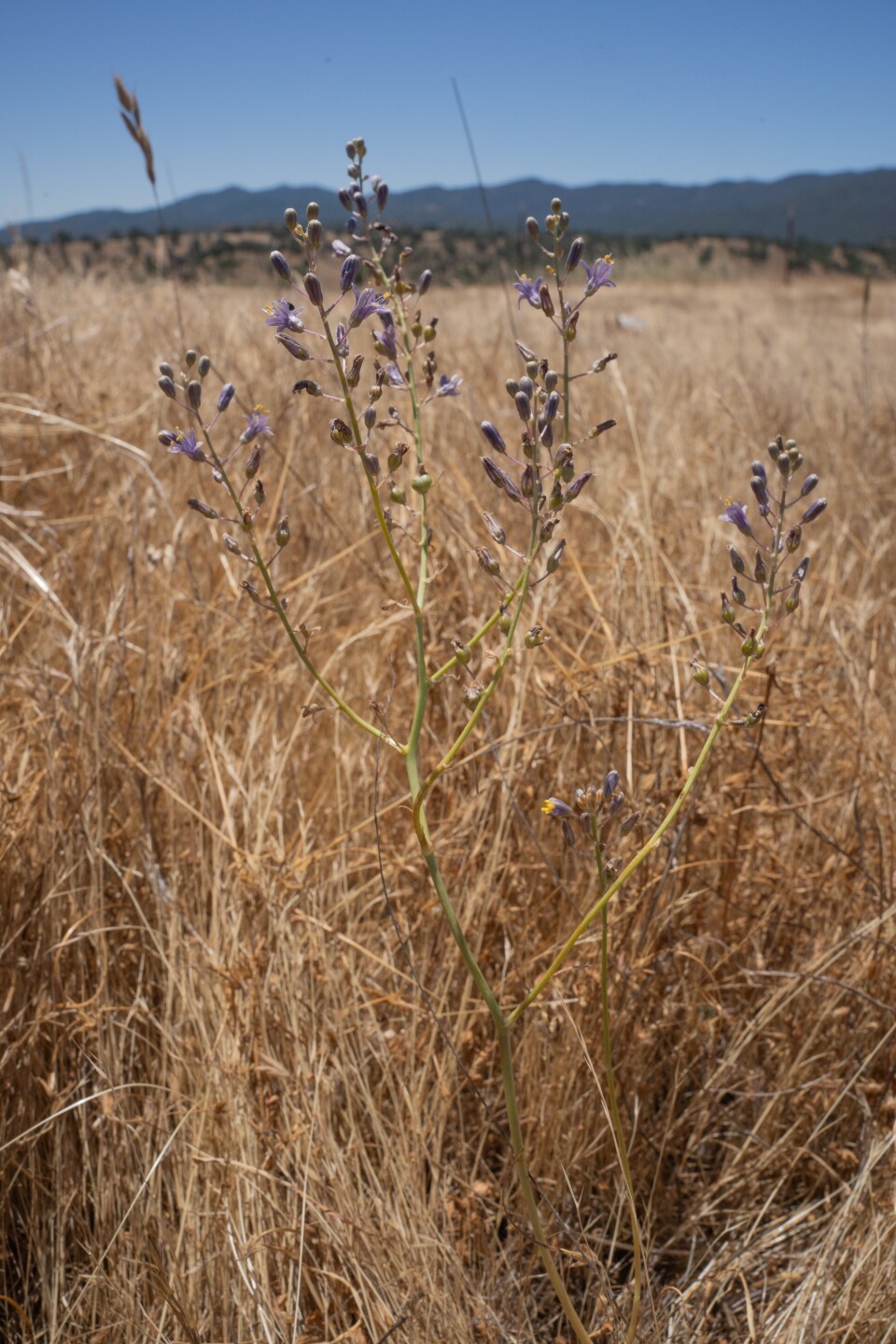Truth matters. Community matters. Your support makes both possible. LAist is one of the few places where news remains independent and free from political and corporate influence. Stand up for truth and for LAist. Make your year-end tax-deductible gift now.
Endangered flower blooms in California, marking a conservation success

An endangered flower one scientist called a “tiny mystery” has cropped up in astonishing numbers in San Luis Obispo County.
Scientists were stunned this spring to find 16,000 Camatta Canyon amoles at Las Piletas Ranch, about 50 miles inland from San Luis Obispo. The flower was previously thought to have a worldwide population of 10,000 plants.
The Camatta Canyon amole had only been known to grow in two locations within a 90-acre area of the Los Padres National Forest. The rare flower is protected under the state and federal Endangered Species acts, but this discovery by scientists from the Nature Conservancy and the California Native Plant Society could challenge that status.
The amole — with royal purple blooms atop eight-inch spiny stalks — can be tough to spot. The amole, a Spanish word that loosely translates to soap root, refers to the Chlorogalum genus that often makes strong soaps and detergent. Its scientific name is Chlorogalum purpureum var. reductum.
Though there are other types of amoles in western North America, this one is unique.
“Often, rare plants live their life without a lot of media exposure,” said Tim Becker, director of horticulture at the Thomas Payne Foundation. “This one’s definitely what I would call a deeper cut of native plants.”
Scott Butterfield, the lead scientist with the Nature Conservancy in California who surveyed and discovered the amole with his team, certainly dug deep to find the flower, which grows in a distinct topography.
He found the plant growing on the slope between vernal pools — springtime ponds typically caused by heavy rainfall — and the natural, domelike hills called mima mounds that surround them.
Heather Schneider, a senior rare plant conservation scientist at the Santa Barbara Botanical Garden, led a three-year conservation project of the Camatta Canyon amole. Why is it so scarce? Human-driven off-road vehicles and livestock grazing smash it, and it has such a limited geographical range. Some years, the amole doesn’t bloom at all.
“There’s still a lot we don’t know about how and why it germinates abundantly in a given year,” she said.
Butterfield and Schneider hypothesized that weather conditions may have led to this year’s extraordinary uptick. Drought-like conditions, which harm plants in competition with the amole, were followed by a few years of higher rainfall. Becker added that wildfires and late rain may have also led to similarly favorable conditions for the amole. That may have strengthened amole bulbs underground.

Butterfield also noted the possibility that the amole has existed there the whole time. He had found a few flowers in 2024, which led him to officially survey the land this year.
“We’ve only owned the property for about five years, so it is very likely that the plant has existed there,” he said.
Butterfield’s discovery hints at the possibility of finding other amole blooms, potentially even challenging its endangered status.
Every five years, the U.S. Fish and Wildlife Services conducts a review of plants and animals listed as threatened. By the next review, Butterfield hopes to have established a new location where the amole grows and have added enough numbers to the population that it can be taken off the endangered species list.
This change in standing, he hopes, may lead to more attention on the plant.
“Until you find a plant like this on your landscape, there aren’t that many people out there looking for it,” he said. “It might exist in other locations; we just haven’t looked.”
For a plant that had been on the decline since the 1980s, simply the potential for research is exciting.
“Until a couple months ago, I never would have even contemplated a study around Camata Canyon amole, or a rare plant on our property,” Butterfield said.
Schneider agreed that this discovery is encouraging and stressed conservation efforts. Having collected five seed samples during her study in 2021 to 2024, collecting more would be important for the future of the plant, especially in uncertain temperature conditions.

“Every opportunity we have to get genotypes into long-term conservation is a little insurance policy against extinction,” she said.
She echoed Butterfield’s optimism and offered a broader perspective on conservation.
“Nature doesn’t work on our time scales,” she said. “All is not lost. There’s still hope. Nature waits. And I hope it inspires people that putting efforts into conservation and looking for plants pays off.”










